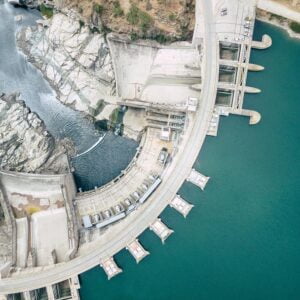The International Organisation for Standardisation (ISO) released its first series of standards on asset management in January 2014. In our opinion, this was a landmark event in the history of asset management, so we have prepared this article to provide some background on the standards and their implications for the asset management community.
This is the second in a series of 13 articles on Implementing ISO 55000.
Articles in this series
What Does the ISO 55000 Standard Contain?
Firstly, there is not one standard for asset management. What is commonly referred to as “ISO 55000” is really a suite of three documents. These three documents are:
- ISO 55000:2014 – Asset management – Overview, principles and terminology
- ISO 55001:2014 – Asset management – Management systems – Requirements
- ISO 55002:2014 – Asset management – Management systems – Guidelines for the application of ISO 55001
Collectively, the three documents provide a “consensus of experts” on the topic of asset management. We should, however, note carefully the phrase “management system for asset management” – this is an accurate description of what you can expect in this series of standards. They will not tell you how to “do” asset management, they will tell you what needs to be in place in order to manage how you do it. If that sounds confusing, think of ISO 9000, ISO 14001 or ISO 31000 – all of these documents provide requirements for management systems rather than detail on the task itself. They tend to be less detailed than the technical standards they replace, with fewer strict requirements and more principles and concepts. They are also intentionally generic, covering as many industry sectors and technologies as possible, so the terminology is a compromise and may be unfamiliar to you.
Let’s have a look at the content of each standard.
ISO 55000:2014
This standard provides an overview of the principles, concepts and terminology relating to asset management. It provides an outline of the business case, as well as a brief description of how each element of an ISO 55000 management system interacts (as opposed to the prescriptive statements in ISO 55001:2014). These elements are:
- Organisational context
- Leadership
- Planning
- Support
- Operation
- Performance evaluation
- Improvement
It finishes with extensive definitions relating to both management systems in general and asset management systems specifically.
ISO 55001:2014
This standard is the document against which auditing is undertaken. It specifies the requirements for establishing, implementing, maintaining and improving a “management system for asset management” that complies with ISO requirements. There are no diagrams and, depending on how you divide up sub-clauses, you can count up to 177 “shall” statements that must be met to achieve certification.
ISO 55002:2014
This standard provides guidance and explanatory notes on the requirements in ISO 55001:2014 – that is, it is intended to support implementation. It follows the same 7 element structure as the other two standards, but with more elaborate “should” statements in place of the “shalls” in ISO 55001:2014. Of note, it contains a diagram showing one possible model for an asset management system, annotated with clause numbers from ISO 55001:2014.
History of development
It has been a long road to consensus on an asset management standard. The project was launched in London in June 2010, followed by meetings of the full PC251 (Project Committee 251) at regular intervals across the world. Each of the 31 participating countries has its own mirror committees and processes to review and comment on the various drafts, resulting in thousands of hours of time going into the process. This culminated in a meeting in Calgary Canada in April 2013, where the final drafts of the standards were presented. Following this meeting – and some last minute work – the standards were released to the world slightly ahead of schedule on 15 January 2014.
Obviously, however, these standards do not represent the first attempts to codify good practice in asset management. In the sense we use it here, informal and proprietary asset management systems began to appear in the late 1990’s. The discipline as a whole gained considerable impetus following a series of high-profile asset failures in out-sourced public utilities and infrastructure in the United Kingdom in the early 2000’s and has spread from there. Some of the key dates are as follows:
2000
First publication of the International Infrastructure Management Manual – an asset management publication targeted at local government and with a focus on appropriate asset management practices (vice systems)
2004
First publication of PAS 55 – a “publically available specification” aimed at establishing appropriate asset management system (vice practices)
2004
Early adoption in UK rail/utilities and growth as a default standard across the world
2008
Second publication of PAS 55
2008 – 2011
Continued growth in international acceptance
2009
Commencement of IAM Competency Framework and Endorsed Trainer Scheme – a coordinated set of asset management competencies with links to an associated schedule of role-based training courses and a scheme to authorise suitable organisations to deliver training
2009
Commencement of AMC Fundamentals of Asset Management course, a single day course to teach the fundamentals of the discipline
2011
Second publication of the International Infrastructure Management Manual – aligned with PAS 55:2008
2011
First publication of the Asset Management Landscape – consensus of peak bodies (through Global Forum on Maintenance and Asset Management – GFMAM) on the content of the asset management discipline
2011
Definitions of 39 subjects in 6 groups
2012
First publication of Asset Management – An Anatomy, a practical guide to the Asset Management Landscape
2012
Introduction of IAM Certificate and Diploma – a set of “qualifications” linked to a formal assessment (examination) of knowledge and the pre-existing training scheme
2012
Introduction of AMC Certification scheme (Associate, Practitioner, Senior Practitioner, Fellow), a set of asset management competencies linked to an experience-based system of certification
2013
Second publication of Asset Management – An Anatomy
2014
First publication of ISO 55000
2014
First publication of ISO 17021-5 – a guide to auditor competency requirements for asset management assessment and auditing
2014
First publication of GFMAM Competency Specification for an ISO 55001 Asset Management System Auditor/Assessor – GFMAM consensus on the requirements for auditing against ISO 55001
2014
Introduction of the World Partners in Asset Management (WPiAM) Certified Asset Management Assessor scheme, a certification scheme linked to a formal assessment (examination) of knowledge against the GFMAM competency specification
These lists are not comprehensive, but they clearly show the growing awareness of asset management and professionalization of the discipline over the last two decades. The release of ISO 55000 has accelerated the pace of change and promoted a consensus approach to the discipline.
Application of ISO 55000
While history will be the ultimate judge, there is strong potential for ISO 55000 to be broadly adopted. In fact, ISO has suggested it is likely to be its second biggest selling standard within two years of publication. Regardless of whether this specific prediction comes to pass, it seems likely that the status of ISO 55000 as a series of ISO standard will move asset management from the historic “bottom-up” drive to a “top-down” drive. That is, instead of the technical elements of a business seeking to push asset management concepts up through their organisation to improve efficiency we will now see regulators and boardrooms drive implementation for one or a combination of the following reasons:
- Regulatory Compliance – With its status as an ISO standard, ISO 55000 will most likely become the basis on which economic regulators will assess the adequacy of pricing submissions received from the organisations that they regulate in ensuring that the represent “value for money” while also protecting the longer term integrity of the assets and satisfying public interests.
- Contribution to Due Diligence – For those not working in regulated industries, ISO 55000 is likely to serve as a benchmark for appropriate stewardship of an organisation’s assets and therefore afford some legal protection in the event of safety, environmental or financial issues. Insurers may also assess the adequacy of an organisation’s Asset Management system using ISO 55000 when determining premiums, providing additional incentive.
- Marketing strategy – Some organisations may simply see some form of certification as offering an inducement to investors or providing some other commercial advantage. If the objective is merely to “tick the box” with certification rather than improve their Asset Management performance, then this may drive inappropriate behaviours.
- Competitive advantage – Some boardrooms may see the potential for organisational efficiencies and subsequent commercial advantage inherent in good asset management practices. This will most likely drive the most committed and holistic approach to implementing ISO 55000, with a focus on improving the business over certification.
Regardless of the organisational imperative, there are a range of ways that an organisation might seek to apply ISO 55000:
- Alignment – an organisation might choose simply to benchmark its current practices against ISO 55000 and adopt those elements it considers appropriate. This might be appropriate for existing, large organisations in lightly regulated industries, where the cost of changing embedded practices might exceed the benefits of moving to an ISO 55000 compliant asset management system (at least in the short term!). There is a sliding scale here, from simply benchmarking to almost full compliance and we would recommend any asset-owning organisation give at least some consideration to aligning their practices with the ISO 55000 standards.
- Compliance – an organisation may choose to develop an asset management system that is fully compliant with the requirements of ISO 55001, but not seek certification. This could potentially yield all of the benefits of a certified asset management system, but without the initial and on-going cost of certification. This might be appropriate for a medium to large start-up organisation in a lightly regulated industry. In this case, using ISO 55001 to guide the development of an asset management system will likely be both less expensive and more effective than starting with a blank sheet of paper or practices “borrowed” from similar existing organisations.
- Certification – an organisation might choose to embrace the full certification process. This will obviously incur costs in both achieving and maintaining certification and we would tend to recommend this approach only where there is a clear business case. Examples would include a mandatory regulatory requirement or a clear market/insurer incentive.
If you are considering certification, then you may wish to read our article on the topic to better understand the requirements: “Five Things You Need to Know About ISO 55000 Certification”.
Conclusion
We believe that these new standards ‘raise the bar’ for the discipline of asset management. They provide a clear and highly visible benchmark for good stewardship in a fashion that is visible to the boardroom. While certification is likely to be attractive to only a small sub-set of organisations, we would recommend that all asset-owning organisations at least spend some time to understand the content of these standards and how well their practices align to them.
Looking for further training in ISO 55001 certification?
We offer a range of asset management courses, some of which specialise in ISO 55001 deliverables. If you are interested in reading more about our courses, you can do so by following the links below.
-
Product on sale
 Implementing an ISO 55001 Compliant Asset Management SystemOriginal price was: $2,275.00.$2,047.50Current price is: $2,047.50.
Implementing an ISO 55001 Compliant Asset Management SystemOriginal price was: $2,275.00.$2,047.50Current price is: $2,047.50. -
Product on sale
 Asset Management Foundation AwardOriginal price was: $1,195.00.$1,075.50Current price is: $1,075.50.
Asset Management Foundation AwardOriginal price was: $1,195.00.$1,075.50Current price is: $1,075.50.


